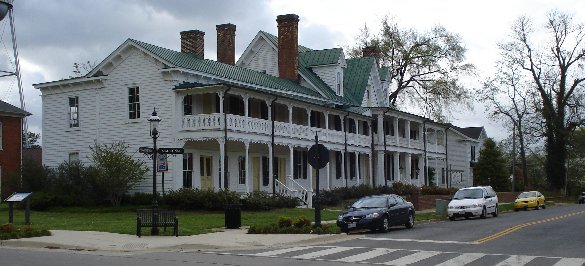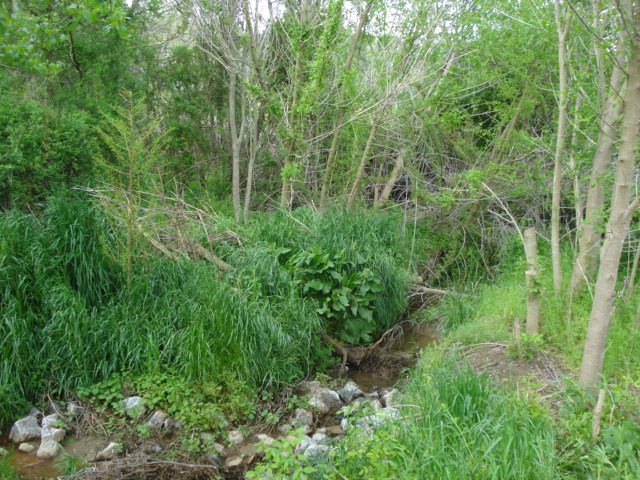
Above is Boyton, Va, about 30 miles west of my tree farm. It is a very charming place, but not growing very much. It once sat on the main lines of communication. Not anymore.
I am hoping to buy another piece of forest land down in Brunswick County. This would be 114 acres, about 90 acres in 12-year-old loblolly pine, the balance in stream management zones with natural regeneration hardwood stands from 1940. This part of the state is Virginia’s “wood basket”. The population has dropped over the years and collapse of the tobacco industry has pushed lots of worn out or marginal lands into trees. That is why land is relatively cheap. The soils are good for growing pine trees but not so good for other things. In addition, the soils can absorb significant amounts of biosolids w/o creating a pollution problem. This region should produce wood. It is what it is good at doing.
Forestry is not labor intensive as it once was. It also does not need much in the way of infrastructure. A particular stand of trees will only need the road about once every fifteen years. This allows for lower maintenance and road construction costs. It also means that a forestry area will support a lower population density. The population will not grow and in some cases will actually decline.

Left – most southern towns have their reb statue. This one is in Boyton in front of the courthouse.
Politicians hate this. For one thing, it means fewer constituents and population decline (or lack of robust growth) somehow seems like a failure or at least a problem. They often get the state to make local investments. Everyplace, no matter how unlikely or isolated, tries to sell itself as a future tech hub. Most of the time, these sorts of development projects fail, but they are successful just long enough to keep people trying. It is sort of like slot machine pay off.
A smarter policy is to let regions do what they do best. People in forest country can engage in forestry. Given the capital intensive nature of today’s forestry, there is scope for some people to have good and high paying jobs – put not many of them. A policy that tries to fix population on the land is silly, expensive and counterproductive. Leave the high tech to Silicon Valley, or even the Research Triangle, which is not very far away in North Carolina.
The compassionate ask, “what about the people?” We should ask that question right back at them. How is it compassionate to hold people near the places they were born, where most of them cannot find good jobs and where all sorts of infrastructure is stretched to help them? If people count, it might be better to help them move to Richmond or Raleigh, which are a little over 100 miles in opposite directions, or maybe someplace else entirely.
Sometimes people would not have to move very far. I already mentioned the Reseach Triangle. Southside Virginia also has some thriving regions. South Hill is growing because of its place astride of big highways. In addition the manmade lakes, like Lake Gaston, on the Roanoke River are magnets for people seeking leisure activity. But there is no sense in freezing the population patterns of any particular point in history. The land that is now my tree farm once supported a couple of large farming families. The last ones left more than seventy years ago. One of the places we made a wildlife feed plot and planted clover was the site of one of the homes. Today my forestry contributes to the support of dozens of people spread around the area, but it doesn’t specifically support anybody, not even me, and certainly does not require anybody to actually live on the land and be there every day.
Nothing is forever. Some places decline; others thrive. The land remains, but people can move. People should move to enjoy better opportunities.
On the news the other day I saw a story about rebuilding New Orleans. There was much gnashing of teeth because a couple years after Hurricane Katrina many areas remains unreconstructed. As I understand it, the areas that are above sea level, such as the French Quarter, are already mostly rebuilt. The low lying regions are the ones still depopulated and not rebuilt. Good. Some of these lowlands are best covered in wetland forests. They should never have been developed in the first place and they certainly should not be redeveloped now that nature has reclaimed them. Some places will gain population and some will lose. There is plenty of land on higher ground. Why be so stupid as to rebuild over and over in places that just don’t make sense? This is especially true if you take into account probably effects of global warming. It will be very expensive to rebuild these areas and it will be a colossal waste of money, as higher sea levels will inevitably cause they to be unlivable and soon.

Above is a stream management zone the often floods. Notice how well the vegetation grows. In the middle, if you look hard, you can see the baldcypress. It is just leafing out.
On well managed forest land, we have stream management zones. These are wetlands where we don’t cut because they protect water quality and soils. They are also good for wildlife. On my land, these areas account for around 20% of the total, so at least that much land is taken out of production. These places flood, but it doesn’t much matter. And when they do experience high water, they help slow the flood further downstream and let water soak in gradually.
Building booms near seashores or along rivers have made us hostages to weather. That is the major reason the costs of storm related losses keep on going up. A flood along a stream management zone causes no trouble. It may even be helpful in getting water to the roots of trees. That same water in a developed region will cause millions of dollars of damage. The news media will shortly be around to blame global warming or the current administration. The actual culprit is the building on the flood prone land. Losses will continue to grow to the extent we do that. The government actually encourages stupid building practices by making low cost flood insurance available. We should just say no.
We should not treat every place equally. Some places we should use intensely; others we should use extensively and some we should just leave alone. This goes for natural and human communities. However, these well might be different places at different times. Government’s role should be to ease and facilitate transitions, not stand in the way of change or enable dumb behavior, but maybe that is too much to ask.
